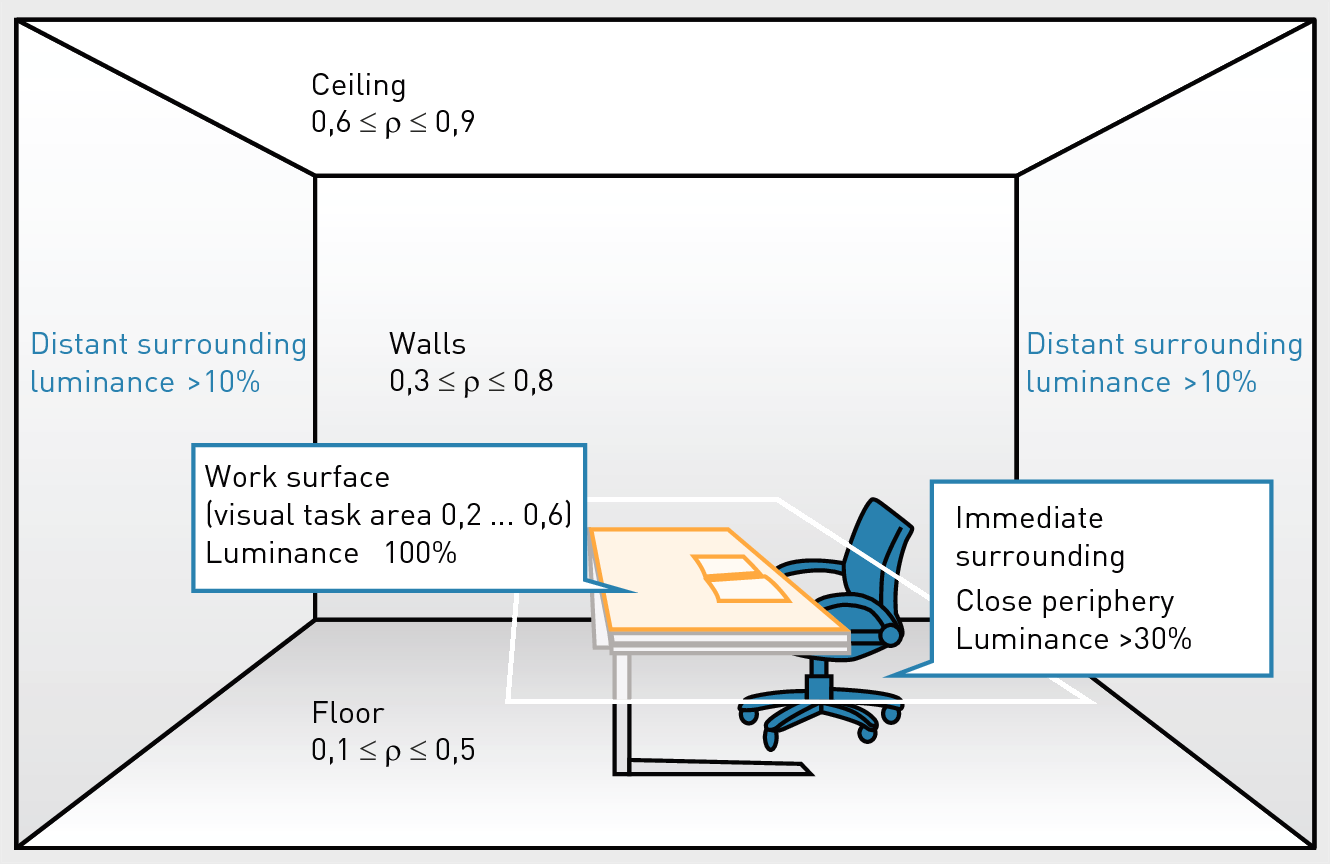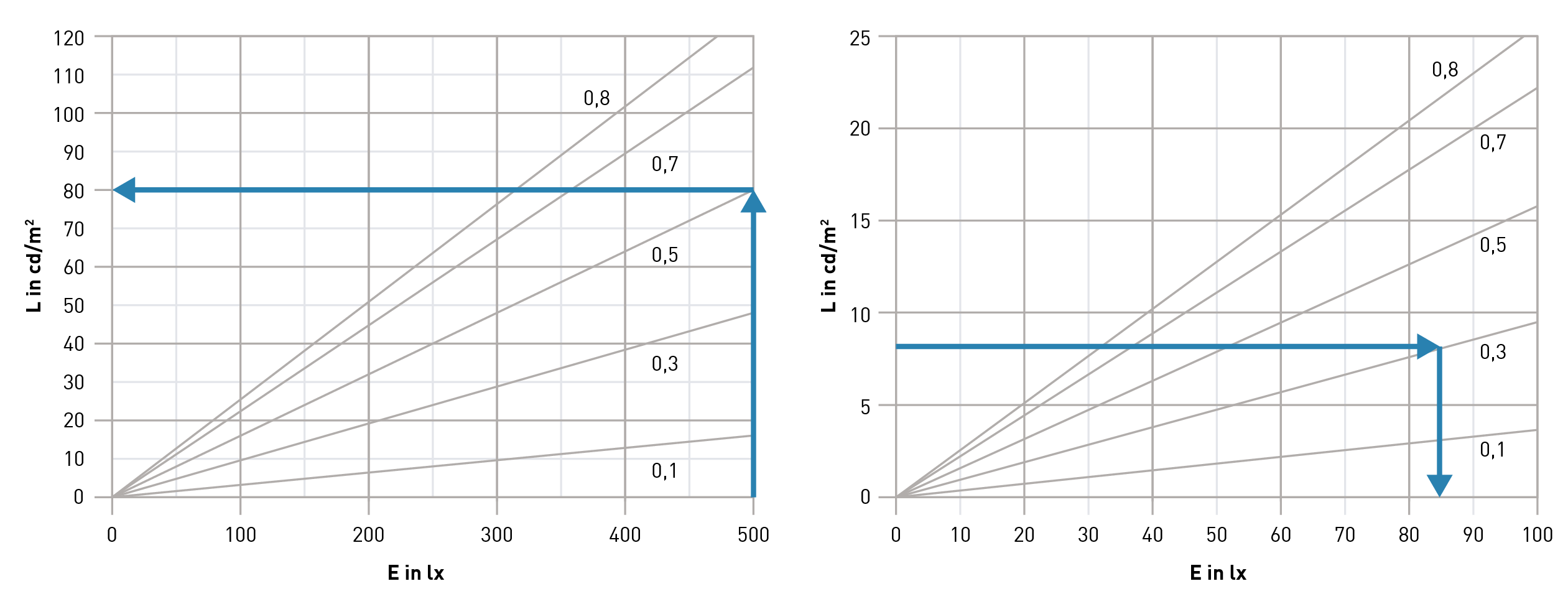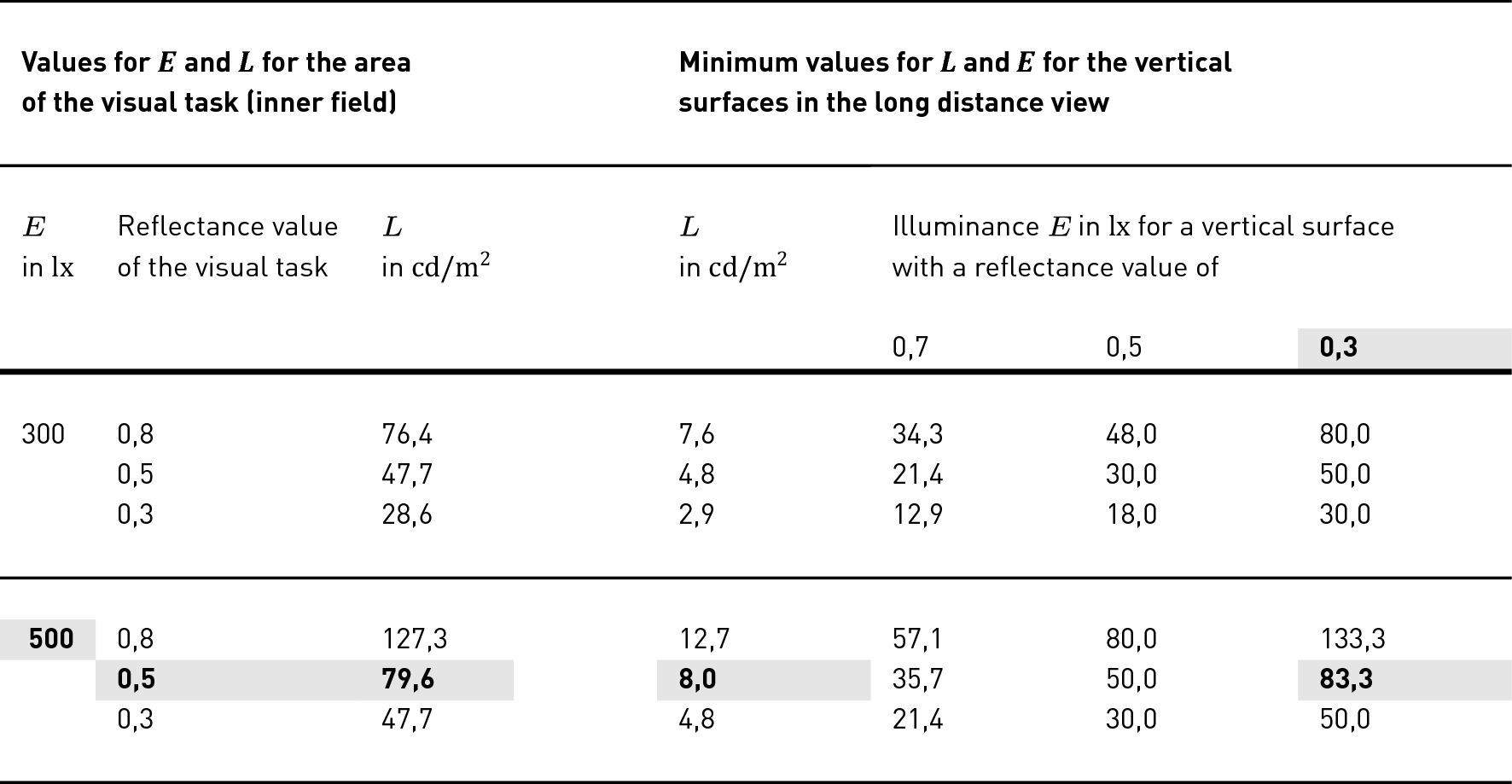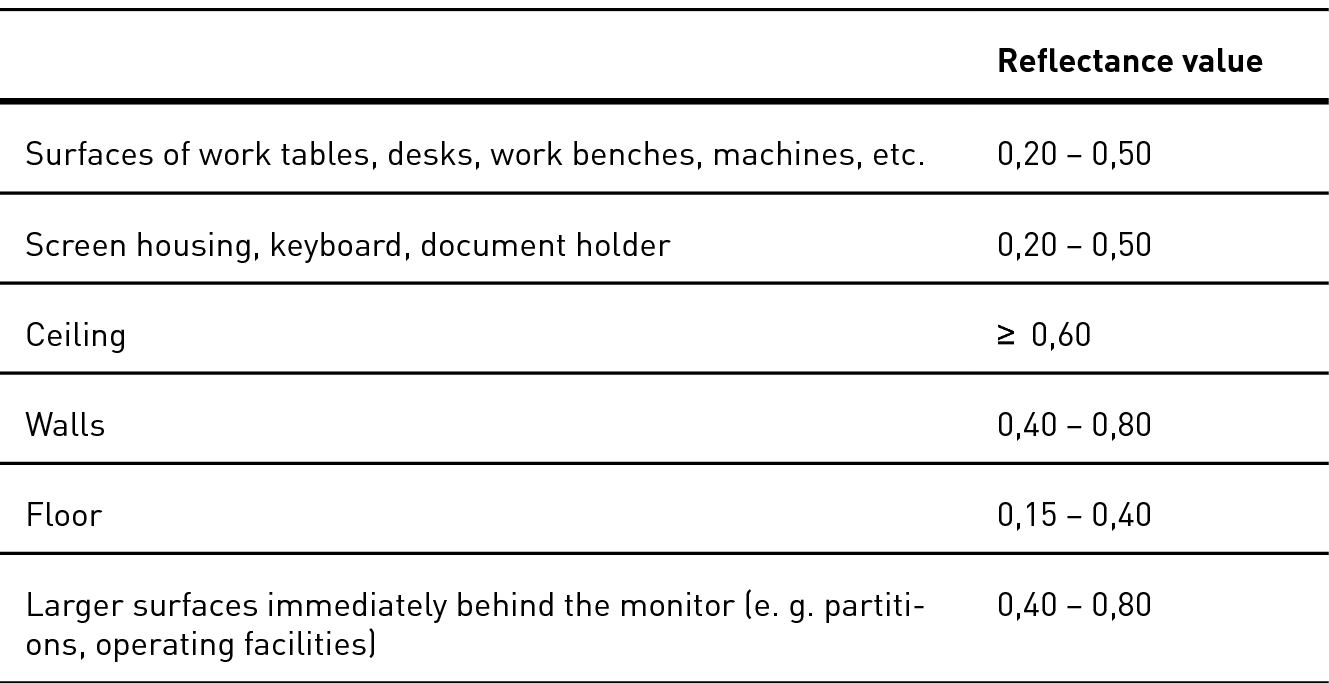
Figure 3.15: Reflectance values according to EN 12464-1 and required luminance ratios in work places.

Figure 3.15: Reflectance values according to EN 12464-1 and required luminance ratios in work places.

Figure 3.16: Graphics on how to convert illuminance E into luminance L and vice versa for reflectance values of 0,8 to 0,1 on matt reflective surfaces.
For good visual conditions as well as for psycho-physical reasons, a balanced luminance ratio in the field of vision is required.
The luminance distribution in the field of vision determines the state of adaptation, which in turn affects visual performance. A balanced adaptation luminance is required to increase
visual acuity,
contrast sensitivity (differentiation of small variations in luminance of the visual detail),
capability of eye functions (such as accommodation, convergence, pupillary change, eye movements etc.).
Luminance distribution in the field of vision also affects visual comfort. The following should therefore be avoided:
excessive luminance levels which can cause glare,
excessive variations in luminance, which can cause fatigue through permanent re-adaptation, and
insufficient luminance levels or insufficient luminance variations which create an unattractive, rather dull and thus hardly stimulating work environment.
A balanced luminance distribution in the field of vision, which is contained within certain limits, contributes significantly to visual performance and visual comfort. Extreme variations in luminance in the field of vision mean additional adaptation work when looking at the surroundings, which may cause premature fatigue and lack of concentration, which can lead to visual errors. In case of serious variations in luminance, impending threats from the environment, e.g. approaching vehicles or overhead cranes with loads etc. in industrial halls may not be recognised in time, rendering timely reactions impossible. A balanced illuminance distribution in the field of vision furthermore supports communication with work environment and people.
The luminance of a surface depends on its reflectance value and the illuminance incident on the surface. EN 12464-1 provides intervals for the reflectance values of the main surfaces in a work room which must be observed particularly for extended industrial and handcraft-related work rooms. Especially in such and similar cases, a balanced distribution of brightness and luminance in the visual field is particularly important for visual capability.
Ceilings: 0,7 to 0,9
Walls: 0,5 to 0,8
Floor: 0,2 to 0,4
The reflectance value of surfaces on bigger objects, such as furniture and machines, should range from 0,2 and 0,7.
The luminance L of room surfaces featuring a completely scattered reflection (matt surfaces) can be calculated according to the following formula:

In this case, E is the illuminance in lx on the surface in question with the reflectance value ρ. The following aspects must be considered (fig.):
The reflectance values of the closer surroundings of the work piece(s) should be selected in a way that results in luminance ratios of no bigger than roughly 3:1 between work area (inner field) and surroundings. Attention is directed to the visual task when it is brighter than its surroundings.
Lighting type, reflectance values and colours of extended surfaces in the field of vision (ceiling and walls, essentially) must be selected in a way that creates a comfortable luminance distribution in the room. A lack of variety in luminance and colour results in a monotonous room atmosphere. However, luminance ratios bigger than roughly 10:1 between work surfaces and more distant extended surfaces in the field of vision should be avoided.
The maximum luminance ratios yield the spatial dimension of the immediate surrounding area of the visual task area and its illuminance/luminance values standardised in EN 12464-1.
A luminance ratio of 10:3 (see also fig.) between the visual task area (inner field) and the (close) surroundings can generally be realised using the illuminance values and specified in EN 12464-1 if reflectance value differences are not too extreme.
Differences in luminance between the visual task area (inner field) and more distant extended surfaces in the field of vision of no more than 10:1 can only be realised through diligent lighting design in the whole room, including the areas outside of the immediate surrounding area – but possibly only with additional lighting installations.
In EN 12464-1 recommendations for primary surfaces are
a minimum of 50 lx for walls at a uniformity U0 of at least 0,10 and
a minimum of 30 lx for ceilings at a uniformity U0 of at least 0,10.
In some areas such as storage rooms with shelves, steel plants, railway stations etc., the complexity of the room permits appropriate deviations from these definitions.
In offices, classrooms, hospitals as well as corridors and stairways, the values are a minimum of 75 lx for walls and 50 lx for ceilings at a uniformity of 0,10.

Table 3.3: Examples for illuminance E and luminance L in the visual task area (inner field) and extended, more distant areas in the field of vision. The example marked in the table is highlighted with arrows in figure.
Example
A mounting workstation in an industrial hall with a visual task reflectance value of 0,5 is illuminated at 500 lx. The distant vertical surfaces, e.g. shelves with a reflectance value of ca. 0,3 must be illuminated at a minimum of 83 lx to ensure a balanced luminance distribution between the visual task area and the distant surroundings. In EN 12464-1, detailed observations regarding differences in luminance such as this are not made. Regardless of the reflectance values of the vertical surfaces, a minimum vertical illuminance of 50 lx is recommended for the case at hand.

Table 3.4: Reflectance values for office spaces. The minimal deviations from the reflectance values in EN 12464-1 can be explained by the fact that these apply for all kinds of work places. The values contained in this table, however, are adapted to the highly sensitive visual conditions in rooms with VDU workstations.